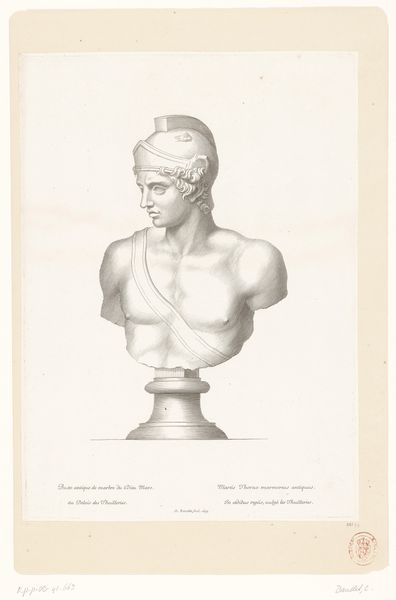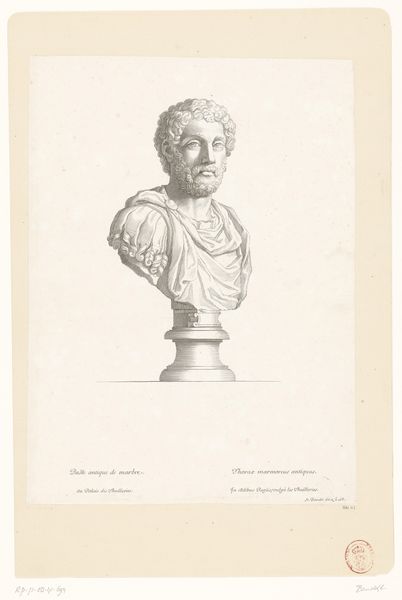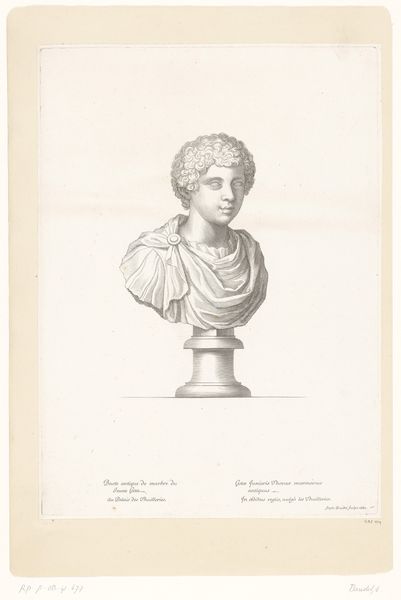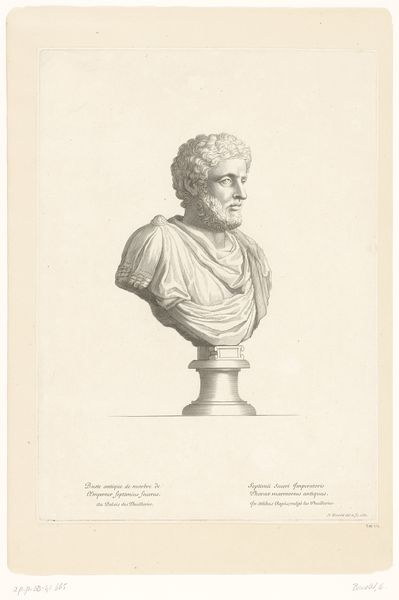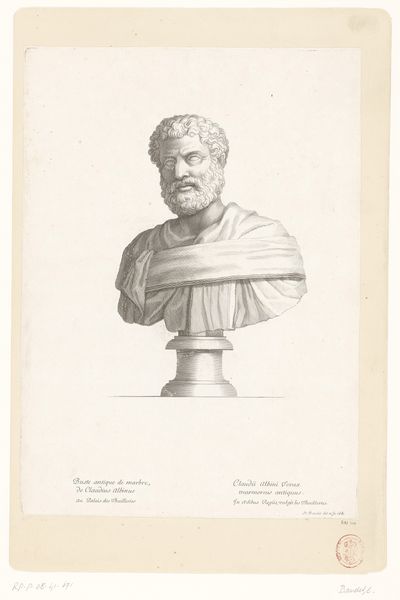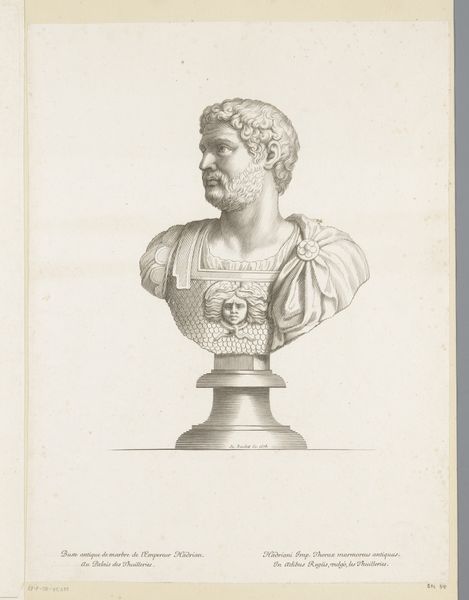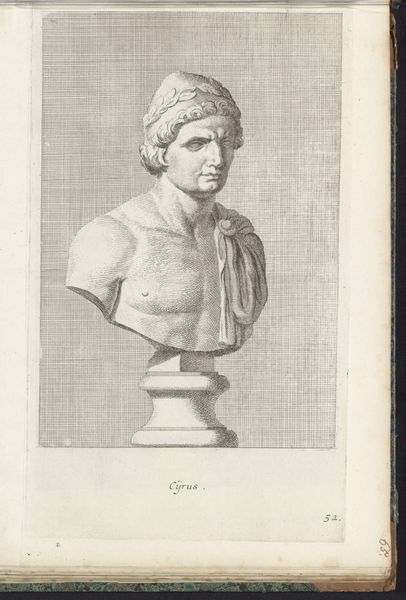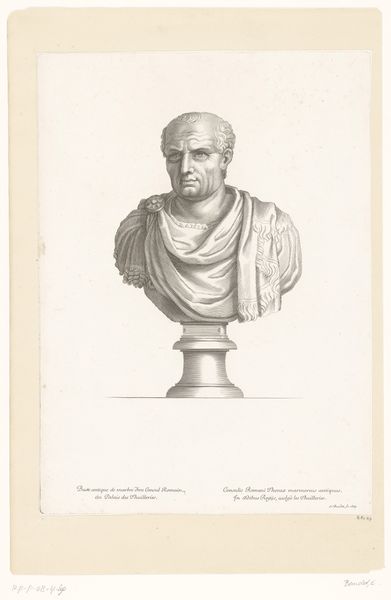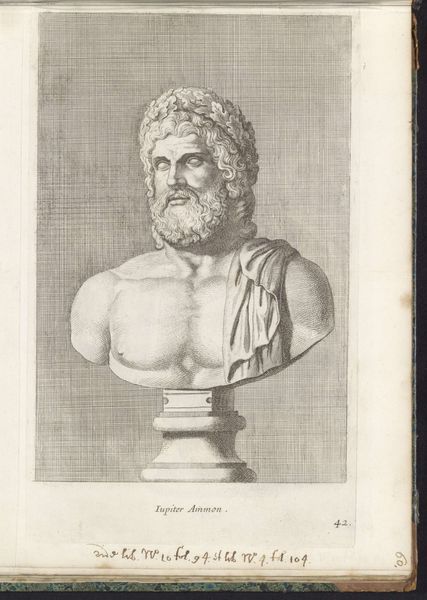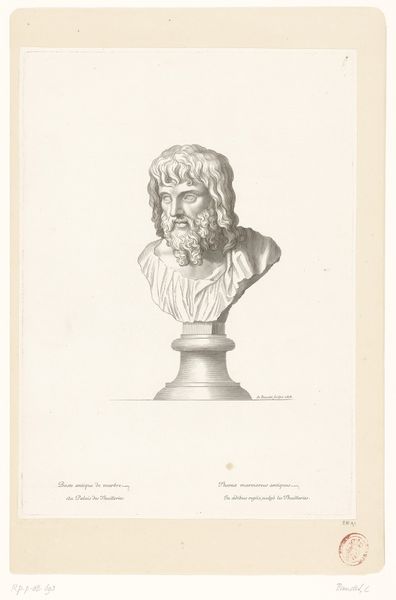
drawing, sculpture, engraving
#
portrait
#
drawing
#
baroque
#
greek-and-roman-art
#
old engraving style
#
traditional media
#
form
#
sculpture
#
line
#
engraving
Dimensions: height 398 mm, width 287 mm
Copyright: Rijks Museum: Open Domain
Editor: Here we have Etienne Baudet’s 1681 engraving, “Antieke buste van een bebaarde man," which translates to "Antique bust of a bearded man." It's an incredible depiction of classical sculpture rendered in print. The delicate lines create such a sense of volume, it's like the sculpture itself is emerging from the paper. How did images like this circulate and function in the 17th century? Curator: That's a crucial question. Baudet’s engraving exists within a broader context of image-making aimed at disseminating knowledge and taste. In the 17th century, engravings such as these weren't just art objects; they were vital tools for art education and promotion of classical ideals. Consider the absence of photography; engravings served as the primary way to share images of important artworks across Europe. This print likely circulated amongst artists, collectors, and scholars. How do you think the image’s inscription impacts its reception? Editor: It mentions that the original bust is from the Royal collections, so that would have signaled authority and importance. To own this engraving might signal a certain social standing. Curator: Precisely. Furthermore, think about the role of classical art at the French court. Displaying accurate images of celebrated sculptures, many of which adorned royal gardens, reinforced Louis XIV’s image as a powerful ruler associated with the grandeur of antiquity. These engravings weren’t merely reproductions but carefully crafted endorsements of specific aesthetic and political ideologies. Do you get a sense of idealization? Editor: Yes, there's definitely an effort to present this classical bust as an ideal form, the sharp lines, and careful rendering of the face give it a powerful, intellectual presence. I see now how this simple print tells us so much about art’s role within society. Curator: Indeed. By examining the image’s production, distribution, and reception, we begin to understand how art becomes embedded in broader cultural and power structures. Hopefully this is valuable knowledge as you keep learning about art.
Comments
No comments
Be the first to comment and join the conversation on the ultimate creative platform.

